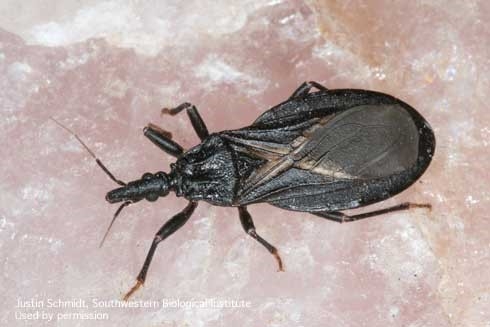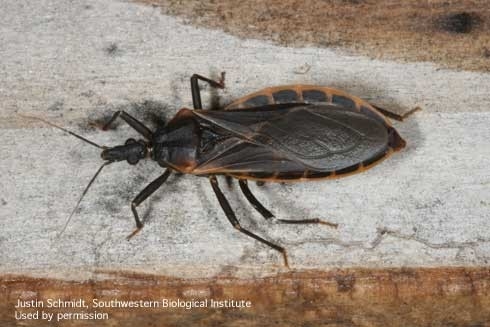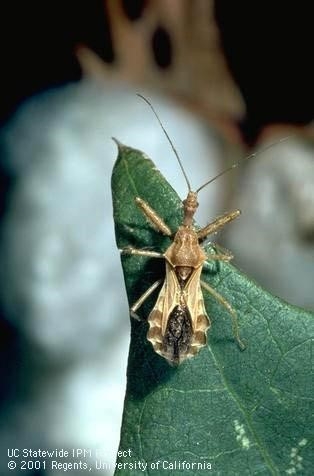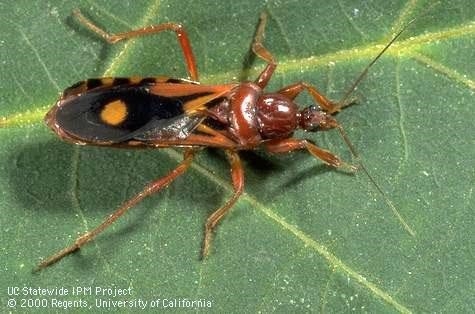
UC IPM Pest Note Available
In anticipation of questions, we recommend UC Master Gardener volunteers read and bookmark the UC IPM Pests Notes: Conenose Bugs. 
As indicated by UC IPM, there is a low instance of Chagas disease in humans in the U.S. “Researchers attribute the low incidence of Chagas disease…to poor efficacy of disease transmission by the bugs, infrequent human contact, and inability of the bugs to permanently colonize homes.”
Conenose bugs are in the Reduviidae family, a group of insects known for a sturdy body and large proboscis. Most reduviids are beneficial as insect predators, and include various species of assassin bugs. Conenose bugs are easily confused with other assassin bugs as well as bugs with similar body shapes from other insect families. Conenose bugs prefer sheltered habitat such as indoors, beneath porches, in wood or brush piles, and in outdoor structures such as dog houses and chicken coops.
ID Methods and Resources
If you receive a call about conenose bugs in your area, alert the caller not to touch the bug with bare hands. They can bring a sample in a sealed container or take a picture and send it to their local UC Master Gardener Program, UCCE advisor, or county agricultural commissioner for identification. Information that can be sent to the client include the UC IPM Pest Note on conenose bugs as well as information available on the Centers for Disease Control and Prevention website. The CDC web site also has useful photos to help in identification.
The insects below are NOT kissing bugs:

Contributor - Associate Director for Urban & Community IPM/ Area Urban IPM Advisor

